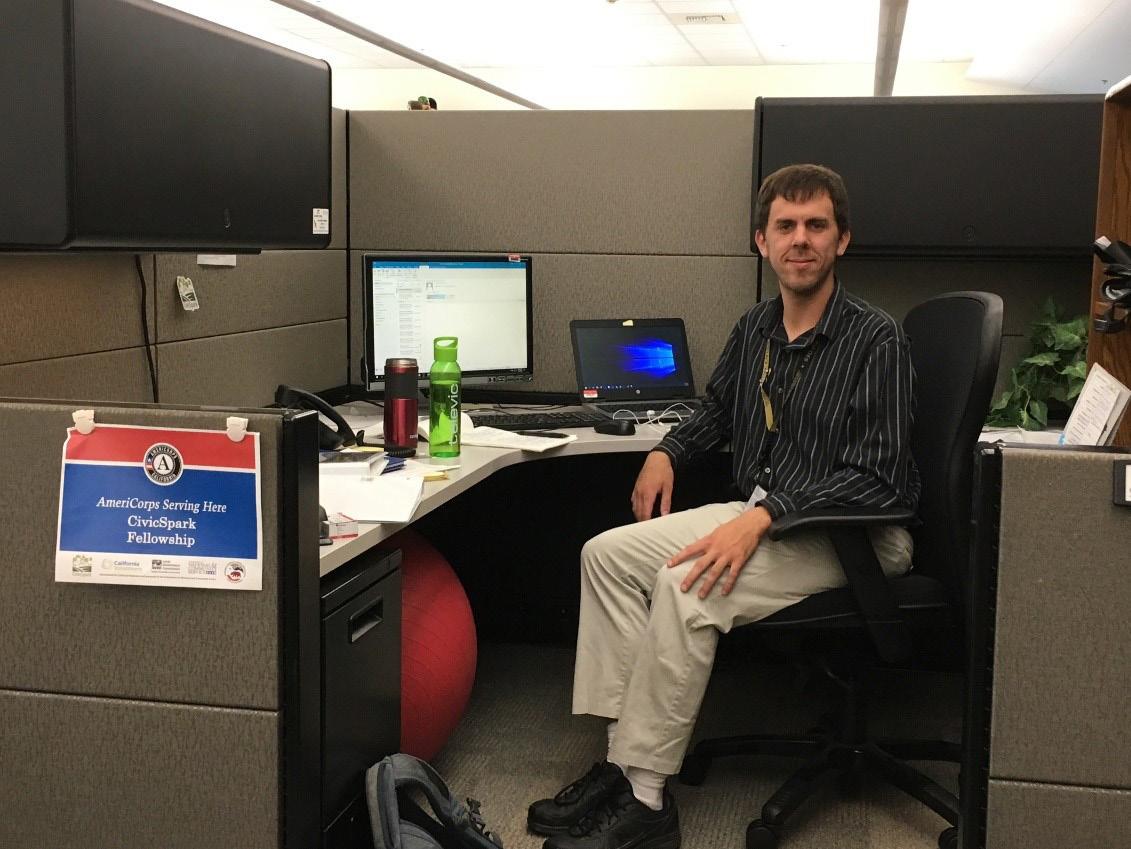
4 minute read
Adaptation Planning
José Lara, Division Chief, Hazard Mitigation Planning in the Recovery Directorate
The apocalyptic wildfires of 2020 burned 4.2 million acres in California, an area nearly the size of the state of Connecticut, and prompted Governor Gavin Newsom to tweet “climate change is real.” Wildfire season has ended, only to be succeeded by flood season in California. The state’s flood hazard, too, is exacerbated by climate change. Rising sea levels are projected to turn waterfronts into waterways. Increasingly severe weather means long periods of drought relieved by massive atmospheric rivers. Coming full circle, the heavy rainfall from California’s winter storms causes flooding and debris flow in the burn scars left by wildfires. As the earth warms, floodplain managers are anticipating increased, unwanted water from the sea, sky, and mountains. Fortunately, we have the tool to help our local jurisdictions incorporate flooding hazards exacerbated by climate change into their planning efforts: the Adaptation Planning Guide (APG).
Advertisement
We are proud to announce the publication of the 2020 Adaptation Planning Guide. The APG is a state-produced resource for climate adaptation planning by local governments and regional planning agencies. Climate adaptation planning identifies ways that communities might be harmed by the effects of a changing climate and finds strategies to reduce that harm. The California Governor’s Office of Emergency Services (Cal OES) is designated as the lead agency for updating the APG and is mandated by SB 246 to do so one year following an update to the Safeguarding California Plan. This resource, updated in close collaboration with the Governor’s Office of Planning and Research (OPR) and the California Natural Resources Agency (CNRA), builds upon the first APG that was developed in 2012 (also by Cal OES and CNRA). It contains processes and technical guidance on climate adaptation planning in various sectors. It includes resources on how to integrate climate change adaptation into plans like Local Hazard Mitigation Plans and General Plan Safety Elements. Finally, it provides example strategies and detailed case studies of successful climate change planning in California.
The update process for the APG involved many external stakeholders. In addition to working closely with OPR and CNRA, the update team convened an interagency workgroup. The workgroup, consisting of representatives from state agencies, local jurisdictions, and communitybased organizations across California, gathered input at all stages of the process. This work, in combination with a robust public engagement process, ensured that the APG is reflective of best practices in the field and the needs and priorities of our stakeholders, audiences, and primary users. Last year, Miles Gordon, Cal OES State Mitigation Planning Unit CivicSpark Climate Fellow, took this work further and helped to pilot this new guidance
19
in two local jurisdictions: Butte and Tulare counties. Both counties have experienced higher flood risk due to increased variability in precipitation. He worked with Butte County to incorporate climate change vulnerability, specifically flood and wildfire risk into their Health & Safety Element update (now a part of the Butte County General Plan 2020 update). He also worked with Tulare County to formulate a community-level climate change adaptation plan in Matheny Tract (a disadvantaged community in Tulare County).
This year, Laura Emmons, current Cal OES State Mitigation Planning CivicSpark Climate Fellow, continued this work with a focus on flooding and sea level rise, implementing the APG’s guidance in Ventura and Monterey counties. She worked with Ventura County to incorporate flood hazards into their Local Coastal Program update. She also worked with Monterey County to assess sea level rise vulnerability and its role in exacerbating flooding, erosion, and landslides along the coast. Additionally, she helped strengthen the connections between Monterey County’s Multi-Jurisdictional Hazard Mitigation Plan, Moss Landing Community Plan, Floodplain Management Plan, and Climate Action Plan. Lessons learned from these projects will be captured in an APG User’s Guide that will serve to guide other local jurisdictions. New, this year, the APG is integrated into the Adaptation Clearinghouse as an interactive web application. This provides an additional opportunity for users to interact with and use the APG guidance, as well as access other climate resources offered in the Adaptation Clearinghouse. The result is a more accessible, usable, and intuitive climate planning process. We encourage you to share the APG with your floodplain management and planning partners. The APG is the definitive resource for climate adaptation planning in the state of California. A more resilient California is one better prepared for the impacts of climate changes to come, whether they are frequent wildfires, extreme precipitation, or sea level rise.

Miles Gordon, Cal OES State Mitigation Planning CivicSpark Climate
Leading with Science®
Tetra Tech is pleased to be ranked #1 in Water by Engineering News-Record for 16 years in a row.
We are proud to be home to leading technical experts in every sector and to use that expertise throughout the project life cycle. Our commitment to safety is ingrained in our culture and at the forefront of every project.
Have questions or comments about this month's articles?
Participate in the discussion on the FMA facebook page!

21
THE HIGH WATER MARK
The Newsletter of the Floodplain Management Association





